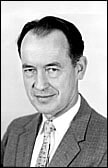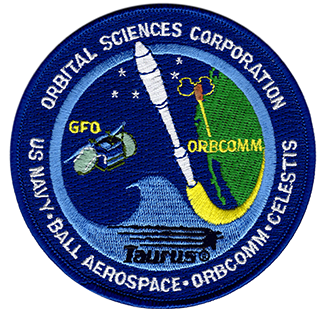Recognized by his colleagues as the "Father of Space Satellite Survivability," Vernal Josephson was a physicist who had a long and distinguished career in the aerospace and defense fields. Dr. Josephson was born in Pleasant View, Idaho, to parents Joseph and Elizabeth Josephson. As a child, he attended school during the winter months in Pleasant View, and later, Malad, Idaho. During the summer months he worked on the family's wheat ranch. His father had more ingenuity than capital, and from him Dr. Josephson acquired his unique ability to understand the true nature of problems and develop appropriate solutions. From early childhood he participated in the hard work of the farm, learning to drive the tractors that pulled large plows and other farm equipment, and to handle horses. By the time he was a teenager he could drive a harvester combine pulled by six span of horses, and helped earn money for the family by hiring out by the day to harvest other farmers' fields. At 80-plus years of age he could still draw diagrams of the mowers, harvesters, and other equipment, that he had used and repaired.
Dr. Josephson's entrance into college was delayed a year while he accumulated the necessary funds. He attended Weber State University in Ogden, Utah, then a two-year college. After graduating from Weber, he attended Utah State University in Logan where he received his B.S. and M.S. degrees. He received a fellowship to study at McGill University in Montreal, Canada, where he earned his Ph.D., conducting research in cosmic radiation. After graduation he worked at the famous Radiation Laboratory at MIT in Cambridge, Massachusetts, where during World War II he helped develop radar and served as the art editor of the Radiation Laboratory's technical publication.
In 1946, Dr. Josephson and his wife and two young daughters moved to New Mexico where he worked for the Los Alamos Scientific Laboratories. During his years working in Los Alamos he was involved in nuclear testing in both the Nevada desert and at the Bikini atoll in the south Pacific. While in New Mexico, he and the family, now with a third daughter, purchased a small "rancho" about 30 miles southeast of Los Alamos. For a number of years, Dr. Josephson would spend his working hours on "The Hill" as Los Alamos was known, and his weekends and leisure hours with the family, including his beloved Belgian Shepherd dog "Echo de la Nuit." He worked a great deal on the family's house making adobe bricks, and building an addition to the house, including plumbing, electrical work, cabinet work and roofing. He also enjoyed raising alfalfa and fruit, and did his share of local irrigation and ditch maintenance.
In 1957, Dr. Josephson accepted employment in California at what ultimately became the Aerospace Corporation. Shortly after arriving in California, the family was completed with the arrival of twin girls. Settling in Palos Verdes Estates (near Los Angeles), Dr. Josephson soon joined the Palos Verdes Breakfast Club, of which he remained an active member until his death. His work at Aerospace Corporation kept him involved in underground nuclear testing. He received several awards from the Defense Department, including recognition for his work by the Defense Nuclear Agency. His later professional experience involved work mainly with satellite survivability, relating to shielding of satellite bodies and antennae. At his retirement from Aerospace Corporation in 1986 he was considered by his colleagues to be the "Father of Space Satellite Survivability." He consulted for several years after his retirement. In 1991 he became the first recipient of the Peter Haas award for electronic technology related to satellite defense systems. Dr. Josephson held several patents pertaining to development of low-level X-rays and other technology relating to radar and space survivability.
From his mother, Dr. Josephson had acquired a lifelong love of music. As a child in Idaho he won recognition playing the trumpet in a state music competition, and played with his parents and siblings in a small orchestra for local dances. During his years at Los Alamos Dr. Josephson played the trumpet both in the community orchestra, and with neighbors as they went caroling.
Dr. Josephson was also interested in the visual arts. In addition to woodcarving and photography, he enjoyed working in oil painting. He painted still lifes, a portrait of his oldest daughter, and landscapes. A frequent weekend excursion for the family would be a day's outing to some picturesque spot, taking along a picnic and Dr. Josephson's painting equipment.
Dr. Josephson was an enthusiastic skier, swimmer and golfer. He also spoke several languages, including German and Russian. In fact, in researching the history of his father's family in Sweden he found it necessary to learn Swedish so that he could translate some of the information he had found.
A long-time member of the Institute of Electrical and Electronics Engineers (IEEE), Dr. Josephson had contacts, friends, and colleagues throughout the world. He attended international conferences in Europe and Great Britain, with his family accompanying him on some of them. After his retirement, he and his wife traveled to New Zealand, Africa and the Seychelles, Nepal and Thailand, where they were particularly interested in visiting wildlife refuges.
Dr. Josephson is survived by his wife Glenna; his five daughters Sandra, Kirsten, Marni, LŸli and Lovisa; seven grandchildren; and four great-grandchildren.


